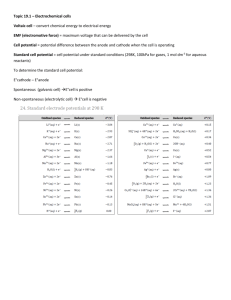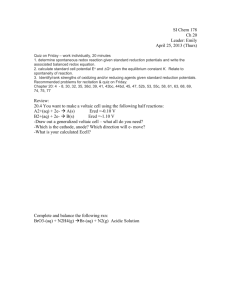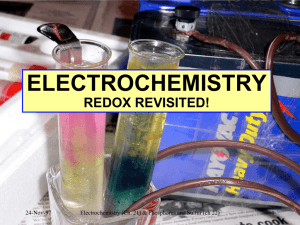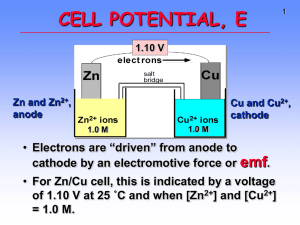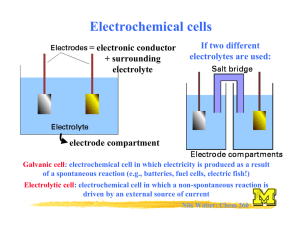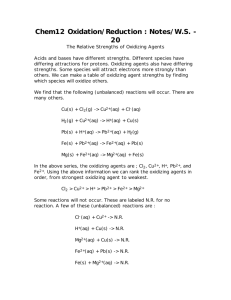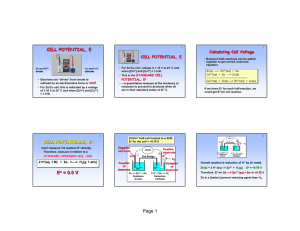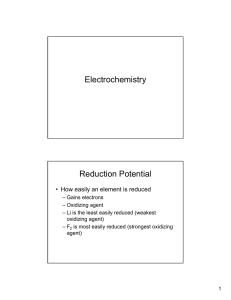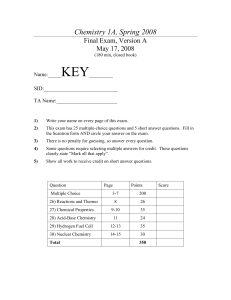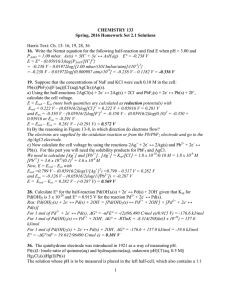Electroanalytical Chemistry: Fundamentals 11/13/2015
advertisement
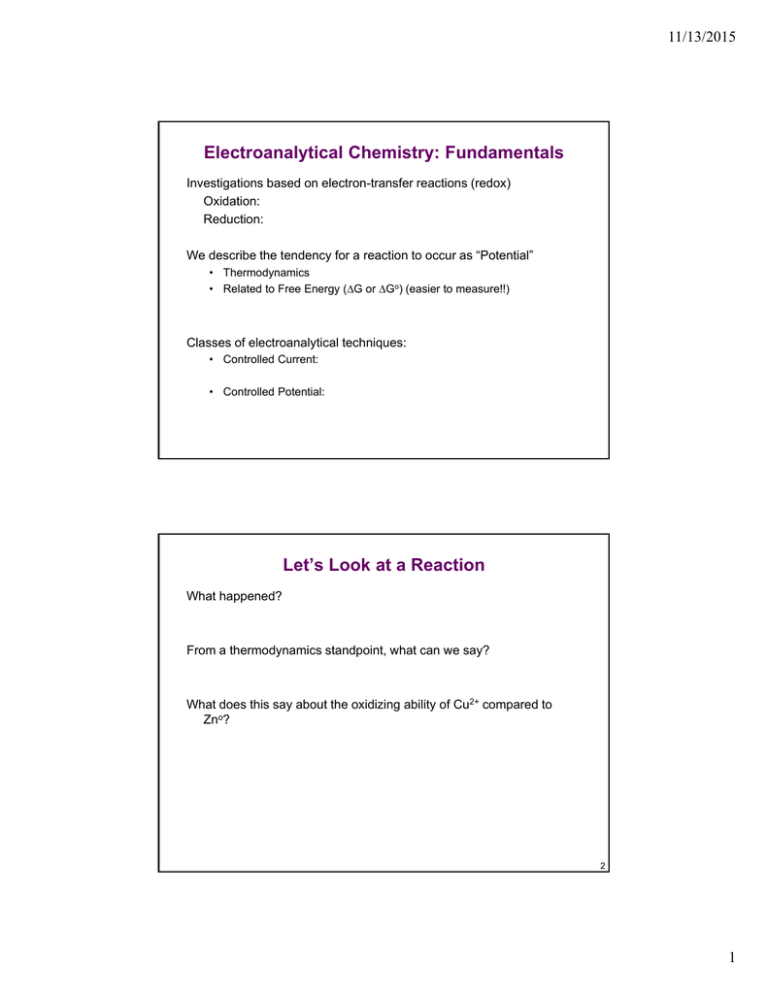
11/13/2015 Electroanalytical Chemistry: Fundamentals Investigations based on electron-transfer reactions (redox) Oxidation: Reduction: We describe the tendency for a reaction to occur as “Potential” • Thermodynamics • Related to Free Energy (G or Go) (easier to measure!!) Classes of electroanalytical techniques: • Controlled Current: • Controlled Potential: Let’s Look at a Reaction What happened? From a thermodynamics standpoint, what can we say? What does this say about the oxidizing ability of Cu2+ compared to Zno? 2 1 11/13/2015 Cu/Zn Reaction Let’s write the oxidation and reduction reactions: Oxidation: Reduction: What if we split the ½ reactions? What happens when we close the switch? 3 Cu/Zn Reaction What happens when we close the switch? Galvanic vs. Electrolytic Cells 4 2 11/13/2015 Quantifying Potential Difference: Standard Reduction Potential • Tabulated for unit activity • Convention is to write things as a reduction • Oxidizing/Reducing Agents • Remember: Go = -nFEo How do we determine free energy changes for a reaction? Reaction Eo (V) F2(g) + 2e- = 2 F- +2.890 O3(g) + 2H+ + 2e- = O2(g) + H2O +2.075 MnO4- + 8H+ + 5e- = Mn2+ + 4H2O +1.507 Ag+ + e- = Ag(s) +0.799 Cu2+ + 2e- = Cu(s) +0.339 AgCl + e- = Ag(s) + Cl- +0.222 2H+ + 2e- = H2(g) 0.000 Cd2+ + 2e- = Cd(s) -0.402 Zn2+ + 2e- = Zn(s) -0.762 K+ + e- = K(s) -2.936 Li+ + e- = Li(s) -3.040 5 Quantifying Potential Difference Rxn 1 (Cathode) Cu2+ + 2e- = Cu(s) Eo = +0.339 Rxn 2 (Anode) Zn2+ + 2e- = Zn(s) Eo = -0.762 V Net Rxn Eo = ?? General Expression: Eocell = Cell shorthand notation: │= ║= 6 3 11/13/2015 Quantifying Potential Difference Unfortunately, Go and Eo are for standard conditions, kinda rare! How do we deal with nonstandard conditions? G = Go + RTlnQ But, Go = -nFEo 7 Nernst Equation E E0 0.05916 V log Q n This relationship (Nernst Eqn.) applies to cell reactions and to half reactions! So, what if [Zn2+] = 0.100 M and [Cu2+] = 0.050 M? 8 4 11/13/2015 Measuring Potentials All potentials are determined or tabulated relative to some reference state. For standard reduction potentials, reference state is the “Standard Hydrogen Electrode” • • • • • Eo defined as 0.000 V H+ (aq) + e- = ½ H2(g) S.H.E. is the anode Pt│ H2, H+ ║ cathode Sometimes called “Normal Hydrogen Electrode” (NHE) S.H.E. isn’t very practical, so we use alternatives: • Silver/Silver Chloride: Ag│ AgCl│ Cl- ║cathode Eo = +0.197V (sat’d KCl) • Saturated Calomel (SCE): Pt│ Hg│Hg2Cl2│ Cl- ║cathode Eo = +0.241V (sat’d KCl) 9 5

